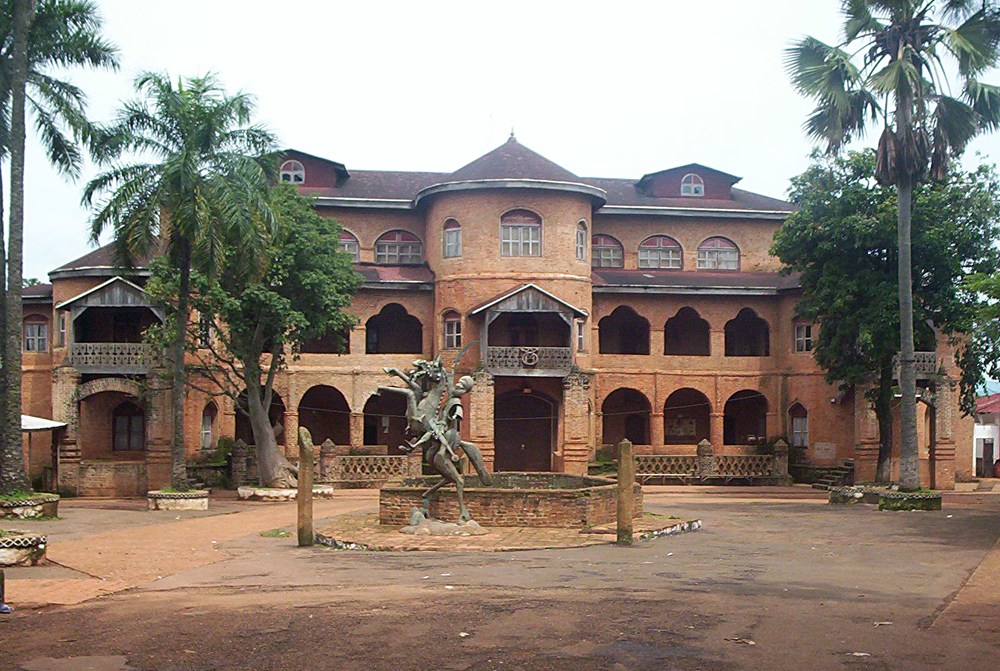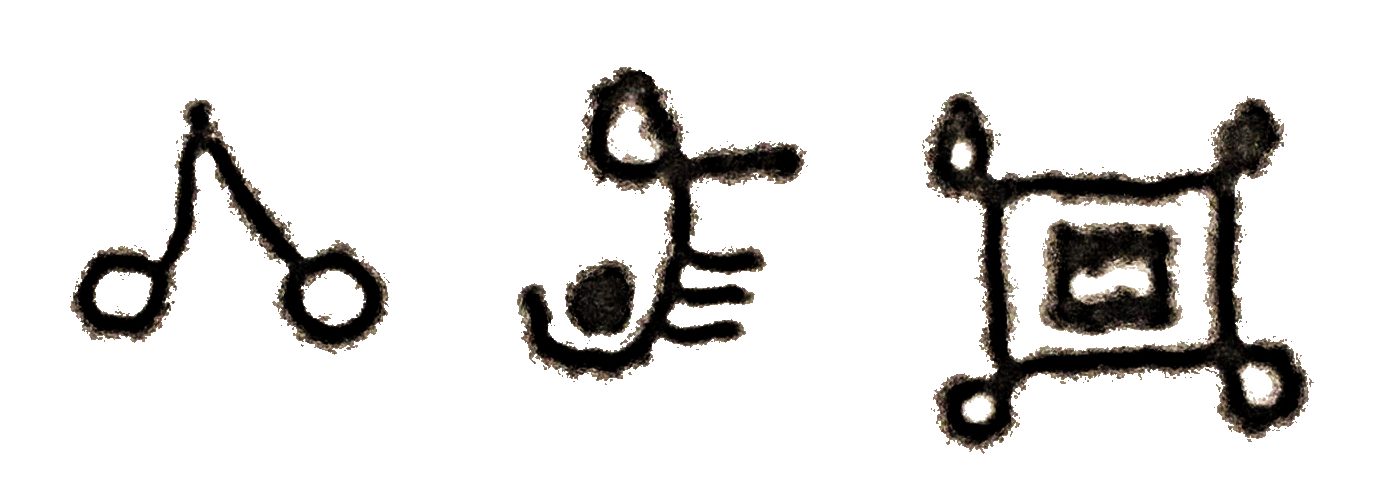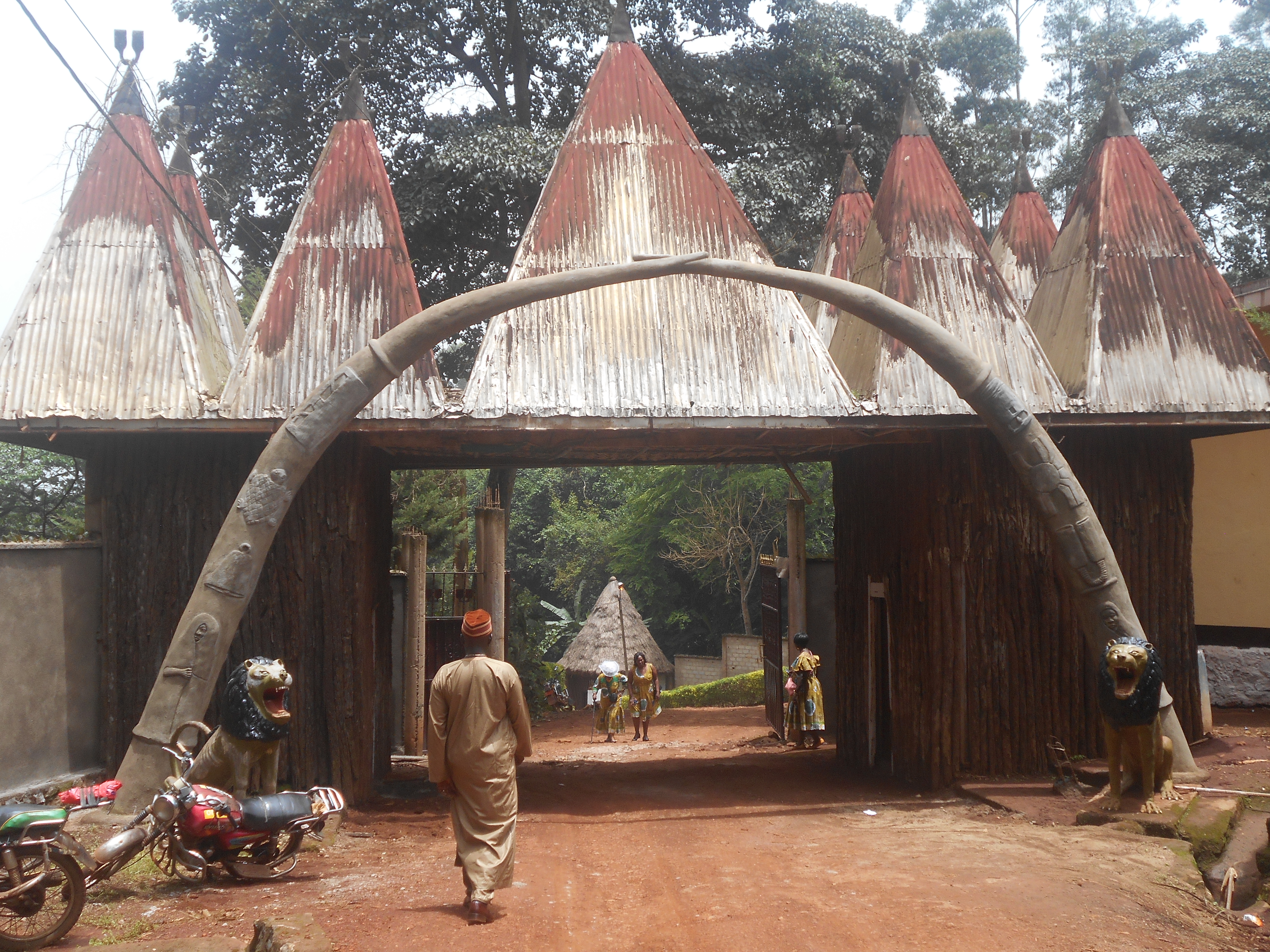|
Foumban
Foumban or Fumban is a city in Cameroon, lying north east of Bafoussam. It has a population of 83,522 (at the 2005 Census). It is a major town for the Bamoun people and is home to a museum of traditional arts and culture. Foumban is known for its political significance in the formation of Cameroon's history and its cultural, tourism and economic potential. There is also a market and a craft centre, while Foumban Royal Palace contains a museum with information on Ibrahim Njoya who invented a new religion, Bamum script, and the artificial language Shümom. History Foumban is the headquarters of the Noun Division of the Western province. It was the seat of the Bamoun Dynasty. The Bamoun Dynasty was founded in the 1394 by Mfon Nshare Yen. Mfon Nshare became the first Mfon (what is today called Sultan) and was the founding father of Foumban, which became the capital city of the Bamoun Dynasty. This was as a result of the many wars against neighboring kingdoms between 1394 ... [...More Info...] [...Related Items...] OR: [Wikipedia] [Google] [Baidu] |
West Province (Cameroon)
The West Region (french: Région de l'Ouest) is 14,000 km2 of territory located in the central-western portion of the Republic of Cameroon. It borders the Northwest Region to the northwest, the Adamawa Region to the northeast, the Centre Region to the southeast, the Littoral Region to the southwest, and the Southwest Region to the west. The West Region is the smallest of Cameroon's ten regions in area, yet it has the highest population density. As home to the enterprising Bamum and Bamileke kingdoms, the West is an economic bright spot and one of Cameroon's more developed regions. This progressive development is tempered by the strong traditional culture that persists among the Bamileke and the province's other major ethnic group, the Bamum (sometimes ''Bamoum'', ''Bamun'', ''Bamoun''). Geography Land The West sits at the geologic crossroads of Cameroon; the soil varies greatly within a relatively small land area. The land along the Noun River and at the Bamendjing ... [...More Info...] [...Related Items...] OR: [Wikipedia] [Google] [Baidu] |
Foumban Royal Palace
The Foumban Royal Palace is a historical building in the city of Foumban, capital of Noun. It is the seat of the Kingdom of Bamum, where the Chief-Superior of the peoples of the valley of the East bank of the Noun resides. The royal palace of Foumban, where the king of the Bamum still resides today, was built in 1917. The Palace Museum tells the history of the dynasty of the Bamum kings from 1394 to the present day, with information on the most famous of the Bamum kings, Ibrahim Njoya, who died in 1933 and who created a writing system at the end of the 19th century called Bamum script. Bibliography * Christraud M. Geary, The Things of the Palace: Catalog of the Bamoum Palace Museum in Foumban, Franz Steiner Verlag GMBH, Wiesbaden, 1984 * Adamou Ndam Njoya, The palace of Foumban: a masterpiece of art and architecture, Editions Ndam and Raynier, Yaounde, Foumban, 1975, 48 p. See also * Kingdom of Bamum * Foumban * Bamum people * Ibrahim Njoya * Bamum language Bamum (Shü P ... [...More Info...] [...Related Items...] OR: [Wikipedia] [Google] [Baidu] |
Ibrahim Njoya
King Ibrahim Mbouombouo Njoya (Bamum: , ''Iparəim Nʃuɔiya'', formerly spelled in Bamum as , and Germanicized as ''Njoja'') in Yaoundé, was seventeenth in a long dynasty of kings that ruled over Bamum and its people in western Cameroon dating back to the fourteenth century. He succeeded his father Nsangu, and ruled from 1886 or 1887 until his death in 1933, when he was succeeded by his son, Seidou Njimoluh Njoya. He ruled from the ancient walled city of Fumban. Person and life Njoya was born circa 1876. His father passed away when he was just three years old, and his mother ruled the kingdom until he could ascend to the throne at the age of 11. Colonel Gorges of the British Army, who met Njoya in 1914, described him thus as "a fine upstanding man."Gorges (1930) He practised polygamy — Gorges reported that he had 600 wives and 149 children by 1915; it is thought that he had 177 children in all. Under the influence of a German missionary, Njoya converted to Christiani ... [...More Info...] [...Related Items...] OR: [Wikipedia] [Google] [Baidu] |
Tikar
The Tikar (also Tikari, Tige, Tigar, Tigre, Tikali) are a central African people who inhabit the Western High Plateau in Cameroon. They are known as great artisans and storytellers. Once a nomadic people, some oral traditions trace the origin of the Tikar people to the Nile River Valley in present-day Sudan. Such ethnic groups were referred to in the 1969 official statistics as "Semi-Bantus" and "Sudanese Negroes." They speak a Northern Bantoid language called Tikar. One of the few African people who practiced a monotheistic traditional religion, the Tikar refer to God the Creator by the name Nyuy. They also have an extensive spiritual system of ancestral reverence. The current population of Tikar in Cameroon is approximately 168,000-173,000. This is a great difference from other enslaved and trafficked ethnic groups like the Kirdi, who still number around 15 million people. This could be due to the high number of Tikar people who were kidnapped and sold into slavery in the Amer ... [...More Info...] [...Related Items...] OR: [Wikipedia] [Google] [Baidu] |
Kingdom Of Bamum
The Kingdom of Bamoun (also spelled Bamoum, Bamun, Bamoun, or Mum) (1394–c. 1916) is a pre-colonial Central African state in what is now northwest Cameroon. It was founded by the Bamum people, Bamun, an ethnic group from northeast Cameroon. Its capital was the ancient walled city of Fumban. Origins The Mbam-et-Inoubou and the Grassfields, Bamum people(Bamoun) and bafia people share ancestry. Origin: Old Bamum Kingdom (Cameroon) Biography: Bamum Kingdom was a pre-colonial state located in the northwest of present-day Cameroon. The Bamъm are an ethnic group of Tikar origin, who spread through the Grasslands Territories and established a political entity in the 17th century, reaching its splendor around their capital, Foumban, along the 19th century. The Bamum were a hierarchical society, in which the king (fon) was the highest authority. The use of certain materials, objects and symbols were monopoly of the monarch, who used them as a power symbol. This privilege could be extended ... [...More Info...] [...Related Items...] OR: [Wikipedia] [Google] [Baidu] |
Noun (department)
Noun is a department of West Province in Cameroon. The department covers an area of 7700 km and as of 2005 had a total population of 1,540,000. The capital of the department lies at Foumban. Subdivisions The division is divided administratively into nine communes and in turn into villages. Communes # Foumban (urban) # Foumbot # Kouoptamo # Koutaba Koutaba is a town and commune in Cameroon. Gallery File:Montagne Koutaba1.jpg, View of Koutaba Mountain File:Montagne de cratère à Koutaba.jpg, View of Koutaba Mountain File:Montagne Koutaba26.jpg, Waterfall on Koutaba Mountain File:Montagne Ko ... # Malentouen # Massangam # Njimom References Departments of Cameroon West Region (Cameroon) {{WestRegionCM-geo-stub ... [...More Info...] [...Related Items...] OR: [Wikipedia] [Google] [Baidu] |
Bamum People
The Bamum, sometimes called Bamoum, Bamun, Bamoun, or Mum, are a Grassfields languages, Grassfields ethnic group of Cameroon with around 215,000 members. Religion The Bamum traditional religion placed great emphasis on ancestral spirits which were embodied in the skulls of the deceased ancestors. The eldest males of each lineage had possession of the skulls of deceased males. When moving a diviner must find an appropriate place to hold the skull. Despite these efforts some men's skulls remained unclaimed and their spirits are deemed restless. Ceremonies are thus done to placate these spirits. There is also respect for female skulls, but the details are less documented. They also believed women made the soil fruitful, thus women did the planting and harvesting. Masks and representations of the head also had importance. In modern times, many Bamum are Islam, Muslim or Christianity, Christian. King Ibrahim Njoya himself converted to Islam then to Christianity and then back to Isla ... [...More Info...] [...Related Items...] OR: [Wikipedia] [Google] [Baidu] |
Bamum Script
The Bamum scripts are an evolutionary series of six scripts created for the Bamum language by Ibrahim Njoya, King of Bamum (now western Cameroon) at the turn of the 19th century. They are notable for evolving from a pictographic system to a semi-syllabary in the space of fourteen years, from 1896 to 1910. Bamum type was cast in 1918, but the script fell into disuse around 1931. A project began around 2007 to revive the Bamum script. History In its initial form, Bamum script was a pictographic mnemonic aid (proto-writing) of 500 to 600 characters. As Njoya revised the script, he introduced logograms (word symbols). The sixth version, completed by 1910, is a syllabary with 80 characters. It is also called ''a-ka-u-ku'' after its first four characters. The version in use by 1906 was called ''mbima''. The script was further refined in 1918, when Njoya had copper sorts cast for printing. The script fell into disuse in 1931 with the exile of Njoya to Yaoundé, Cameroon. At prese ... [...More Info...] [...Related Items...] OR: [Wikipedia] [Google] [Baidu] |
Bafoussam
Bafoussam is the capital and largest city of the West Region of Cameroon, in the Bamboutos Mountains. It is the 3rd most important (financially) city in Cameroon, after Yaoundé and Douala. The ''communauté urbaine'' (Urban Community) of Bafoussam, is a decentralized territorial collectivity. Originally called Urban Commune of Bafoussam, the communauté urbaine (Urban Community) of Bafoussam, was born after the Presidential Decree N ° 2008/022 of January 17, 2008 and composed of three communes, namely: the Commune of Bafoussam I (Bafoussam proper), the Commune of Bafoussam II (Baleng) and the Commune of Bafoussam III (Bamougoum). The city had an urban population of 347,517 inhabitants (at the 2008 Census). Bafoussam is the West Region centre of trade, and people are farming coffee, Potatoes, maize and beans. The city has also a coffee processing facility and brewery. It is the main city of the Bamiléké people and is home to the Bafoussam chief's palace. Bafoussam is a group co ... [...More Info...] [...Related Items...] OR: [Wikipedia] [Google] [Baidu] |
Palm Oil
Palm oil is an edible vegetable oil derived from the mesocarp (reddish pulp) of the fruit of the oil palms. The oil is used in food manufacturing, in beauty products, and as biofuel. Palm oil accounted for about 33% of global oils produced from oil crops in 2014. Palm oils are easier to stabilize and maintain quality of flavor and consistency in processed foods, so are frequently favored by food manufacturers. On average globally, humans consumed 7.7 kg (17 lb) of palm oil per person in 2015. Demand has also increased for other uses, such as cosmetics and biofuels, creating more demand on the supply encouraging the growth of palm oil plantations in tropical countries. The use of palm oil has attracted the concern of environmental groups due to deforestation in the tropics where palms are grown, and has been cited as a factor in social problems due to allegations of human rights violations among growers. An industry group formed in 2004 to create more sustainable and et ... [...More Info...] [...Related Items...] OR: [Wikipedia] [Google] [Baidu] |
Coffee Production
Coffee production is the industrial process of converting the raw fruit of the coffee plant into the finished coffee. The coffee cherry has the fruit or pulp removed leaving the seed or bean which is then dried. While all green coffee is processed, the method that is used varies and can have a significant effect on the flavor of roasted and brewed coffee. Coffee production is a major source of income for 12.5 million households, most in developing countries. Picking A coffee plant usually starts to produce flowers three to four years after it is planted, and it is from these flowers that the fruits of the plant (commonly known as coffee cherries) appear, with the first useful harvest possible around five years after planting. The cherries ripen around eight months after the emergence of the flower, by changing color from green to red, and it is at this time that they should be harvested. In most coffee-growing countries, there is one major harvest a year; though in countri ... [...More Info...] [...Related Items...] OR: [Wikipedia] [Google] [Baidu] |
Fish Farming
upright=1.3, Salmon farming in the sea (mariculture) at Loch Ainort, Isle of Skye">mariculture.html" ;"title="Salmon farming in the sea (mariculture">Salmon farming in the sea (mariculture) at Loch Ainort, Isle of Skye, Scotland Fish farming or pisciculture involves commercial animal husbandry, breeding of fish, usually for food, in fish tanks or artificial pen (enclosure), enclosures such as fish ponds. It is a particular type of aquaculture, which is the controlled cultivation and harvesting of aquatic animals such as fish, crustaceans, molluscs and so on, in natural or pseudo-natural environment. A facility that releases juvenile fish into the wild for recreational fishing or to supplement a species' natural numbers is generally referred to as a fish hatchery. Worldwide, the most important fish species produced in fish farming are carp, catfish, salmon and tilapia. Global demand is increasing for dietary fish protein, which has resulted in widespread overfishing in wild ... [...More Info...] [...Related Items...] OR: [Wikipedia] [Google] [Baidu] |









